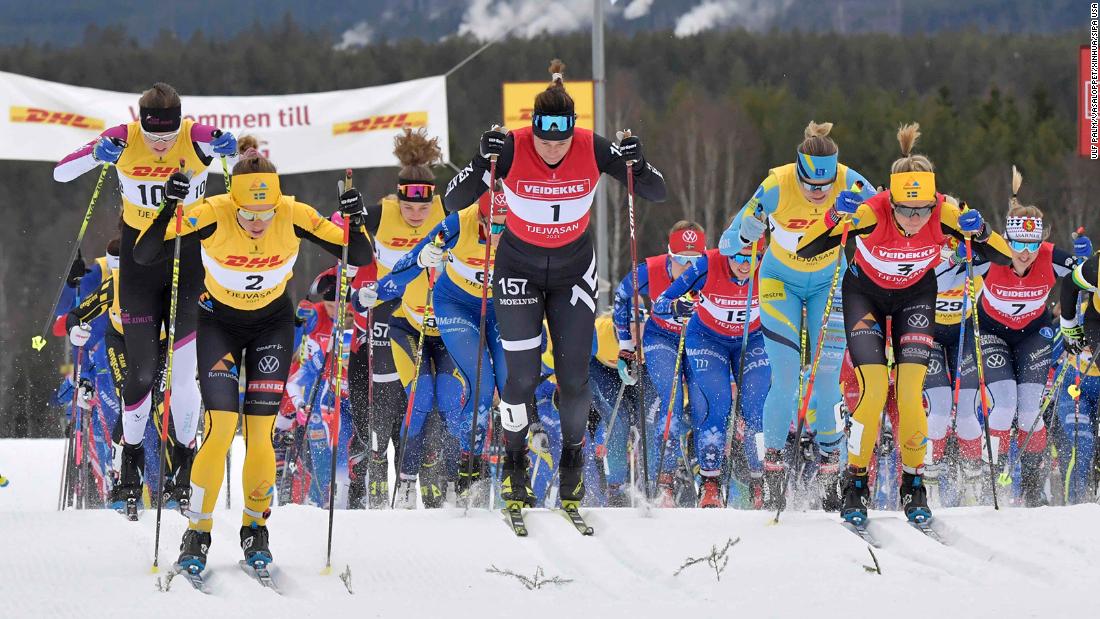
Mental health experts have for years considered physical activity to be a “promising strategy” to help prevent anxiety (affecting up to 10% of people worldwide) or reduce its symptoms.
However, as the authors of the current study wrote, previous research has not been conclusive on the impact of the amount or intensity of exercise or the level of physical fitness on the risk of developing eating disorders. anxiety and about how these relationships can differ between men and women.
Some researchers have also proposed that any association between high levels of physical activity and a lower risk of anxiety disorder may be due to undiagnosed anxiety symptoms that prevent vulnerable people from engaging in physical activity.
The authors compared 197,685 Swedes who participated in Vasaloppet, the largest long-distance ski race in the world with 90 kilometers in length, between 1989 and 2010, with 197,684 adults who had a similar health profile but who did not. they were skiers.
All participants were relatively healthy: they had no serious illness or psychiatric disorders, but Vasaloppet skiers generally exercised more in their free time, smoked less, ate a healthier diet, and had a lower mortality rate than non-skiers. Vasaloppet’s participation requires long-term exercise to prepare for the race.
After a mean follow-up period of 10 years, 1,649 participants were generally diagnosed with anxiety disorders. Compared to non-skiers, skiers had an approximately 60% lower risk of being diagnosed with anxiety disorders, said study author Martina Svensson, regardless of education level, l age and sex.
Differences between women and men skiers
The time it had taken skiers to finish the race, which the authors used as a measure of physical performance, did not affect men’s risk of skiing with anxiety disorders.
However, among women skiers, “women with high physical performance were almost twice as likely to develop anxiety compared to women with lower performance,” said Svensson, an associate researcher at the Experimental Laboratory of Neuroinflammation. Lund University in Sweden.
Despite these findings among fast skier women, “the overall risk of anxiety among these high-performing women was still lower compared to the more physically inactive women in the general population,” Svensson said. “It seems that both sexes benefit from being physically active, although the optimal level may vary between men and women. The factors behind these differences need to be further studied.”
Why skiers had a lower risk of anxiety
The authors of the new study raised “several potential explanations that make sense,” James Maddux, a professor emeritus in the psychology department at George Mason University in Virginia, said in an email. Maddux did not participate in the study.
“Exercise can be a mental distraction from worrying thoughts. We also know that being outside in nature generally improves our sense of well-being, so exercise that is done outdoors, like skiing in this study, should be especially helpful, ”said Maddux, who is also a senior academic at the Center for the Advancement of University Well-Being. “Participating in a period of exercise can lead to a sense of accomplishment and a greater sense of self-efficacy (or self-confidence) that can lead to less anxiety.”
In addition, exercise could reduce inflammation and oxidative stress, which have been linked to anxiety. And finally, exercise induces a brain-derived neurotrophic growth factor (a key molecule involved in changes related to learning and memory) that is lower in people with anxiety disorders and in women, even after to exercise.
The authors wrote that the study has other limitations on the need for research for future research, including comprehensive knowledge of non-skier levels of physical activity and individual traits that may have influenced participation in the study. exercise and vulnerability to anxiety disorders. The study also lacked racial and ethnic diversity.